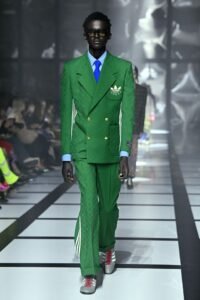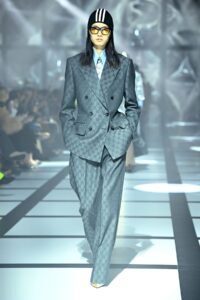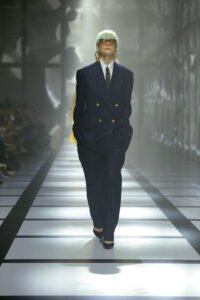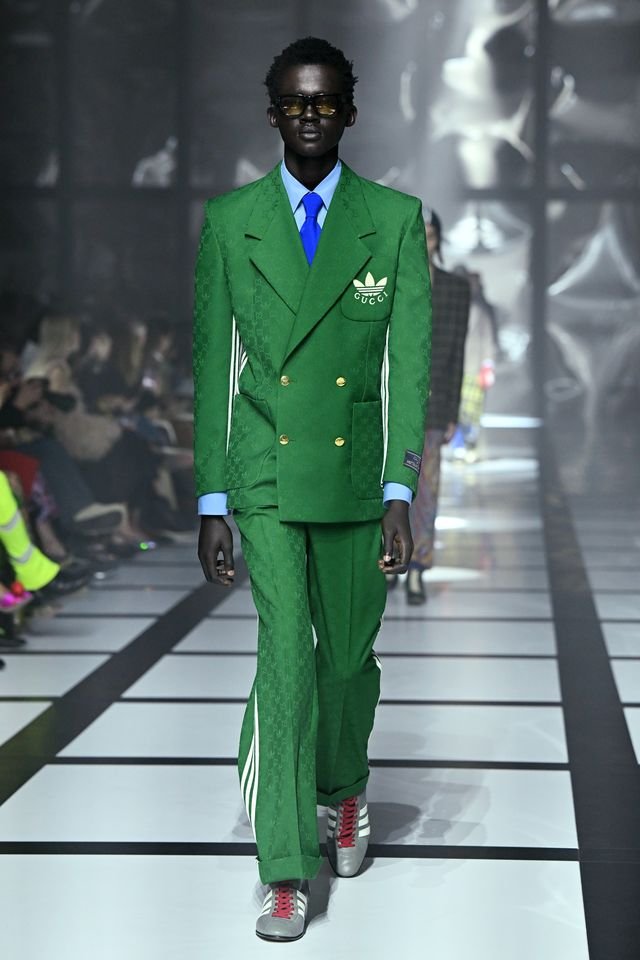People who are just starting to dig into fashion history often ask me for reading recommendations, and my answer has been the same since I started this journey myself a decade ago: Anne Hollander’s slim volume Sex and Suits. Hollander, along with Elizabeth Wilson (whose Adorned in Dreams I’ll also heartily plug), was one of the first academics to make the case for fashion as a subject worthy of intellectual interrogation. In Suits, she posits that the suit is the most evolved expression of modernity in fashion history, since it is universally flattering and easy to move in, while womenswear constantly changes to reinterpret old-fashioned ideas and fantasies about femininity and womanhood.
I thought about Sex and Suits as soon as I saw the first look in Gucci’s fall 2022 show in Milan on Friday: a navy double-breasted suit with loose but not billowing trousers on a model with seafoam-green hair, giant gold earrings, and a pair of black pointy pumps that looked like the best $250 you ever spent at a secondhand shop. The model’s hands were slung in their trouser pockets, and their chin was tipped upward; eyes half-closed behind sunglasses, suggesting a kind of checked-out bliss. Although they were dressed in a totally classic suit (and the preferred jacket style of cartoon millionaires everywhere), they looked more contemporary, more at ease, than many models I’ve seen on the runway lately, where fantasy has dominated. It was an expression of Hollander’s thesis that the suit isn’t just the perfect garment, but Western culture’s premiere fashion achievement.




